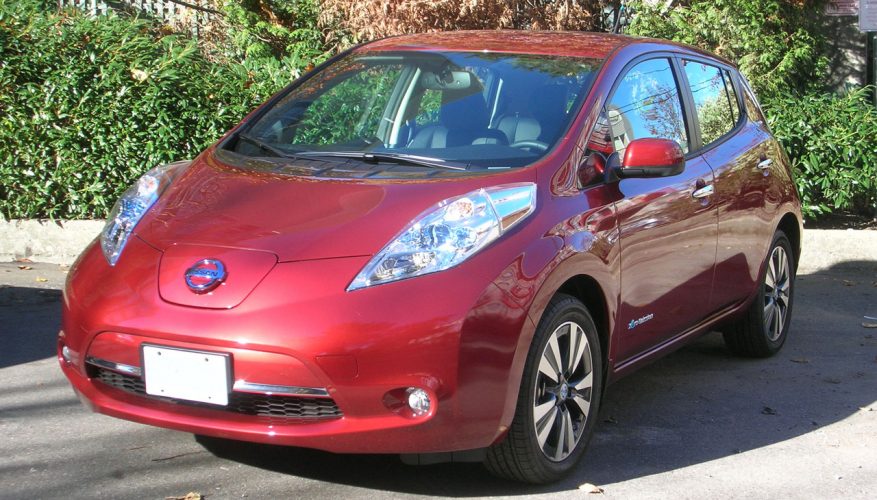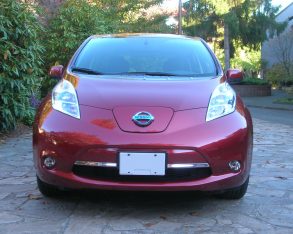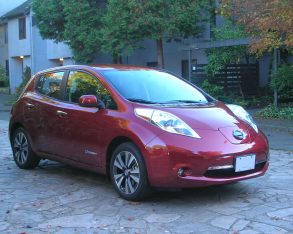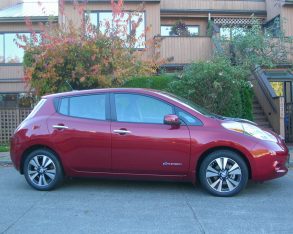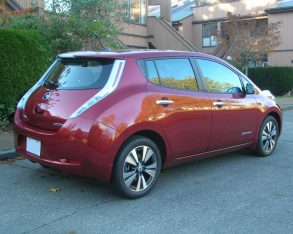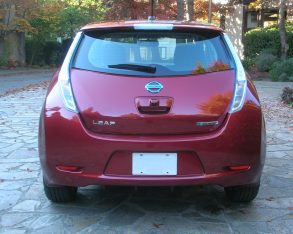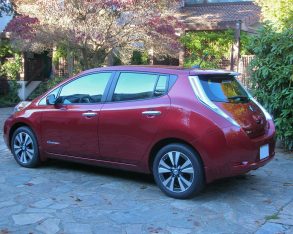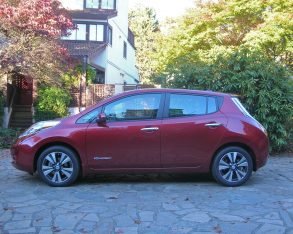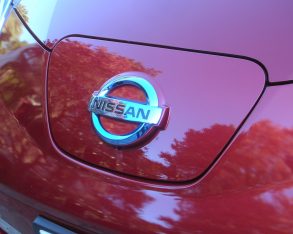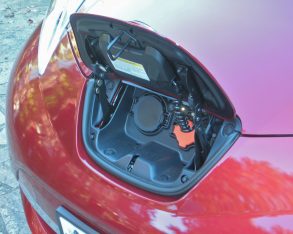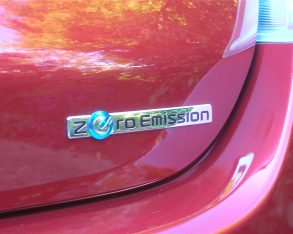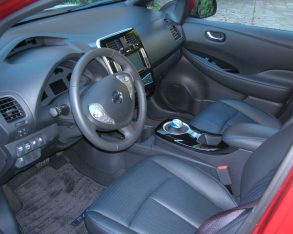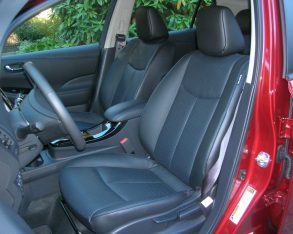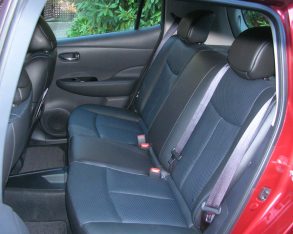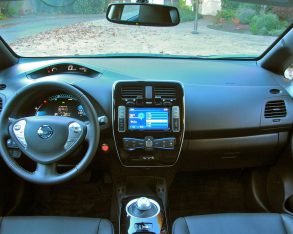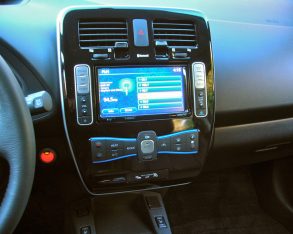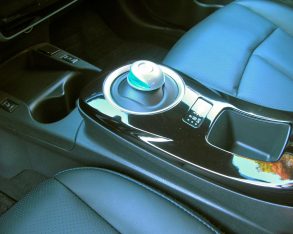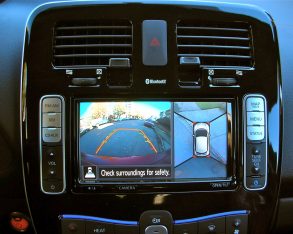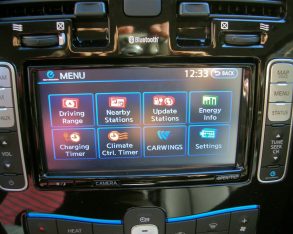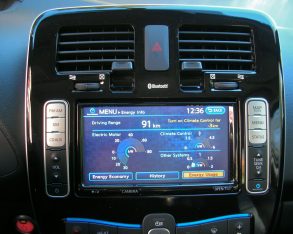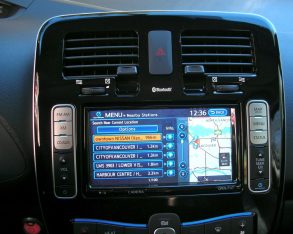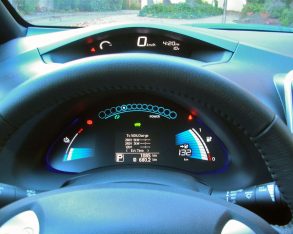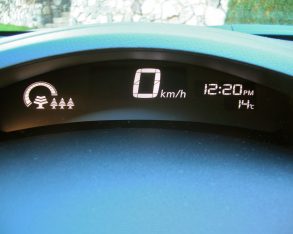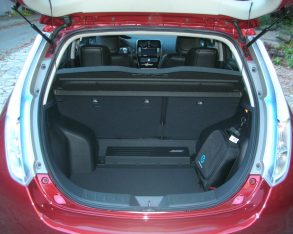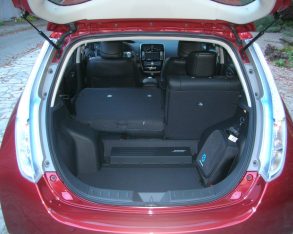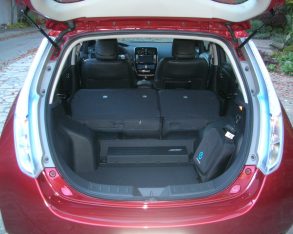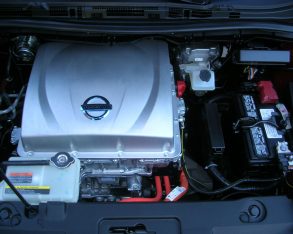 |
| Photo: Simon Hill, Canadian Auto Press |
You can attribute the Leaf’s growing success to several factors that help it find traction among everyday car buyers: First, while its styling is distinctive and unique, it’s not freakishly so. Unlike the iMiEV’s shouty, pod-like, "I am electric!" design (odd considering its available as a regular gasoline-powered car in other markets), the Leaf has the size, proportions and overall feel of a perfectly normal compact hatchback.
Second,
 |
| Photo: Simon Hill, Canadian Auto Press |
Third, the Leaf is getting good word-of-mouth. Leaf owners would be the first to admit that the car isn’t suitable for everyone – its real sweet-spot is as a second car for families who live near the central city core – but those who fit the ideal owner profile appear to have high praise for their Leafs: The British owner of the 100,000th Leaf bought his on the recommendation of a friend who owned one and who praised it not just for its zero-emissions status and advanced infotainment features, but also for its low running costs. In my own social circle, a sailing friend who
 |
| Photo: Simon Hill, Canadian Auto Press |
I had the opportunity to try a top-of-the-line 2014 Leaf SL myself for a week, and as someone who lives downtown myself and has a conventionally powered car available in the driveway, I fit the ideal owner profile to a tee. So did I become a convert? Read on …
For 2014 Nissan has given the Leaf a standard RearView Monitor backup camera, and my test car had a new black leather interior trim option, but for the most part the Leaf remains the same car it was when introduced in 2011.
First
 |
| Photo: Simon Hill, Canadian Auto Press |
Inside, the Leaf is really quite nice, certainly in my test car’s SL trim. The interior styling is clean and modern, if perhaps a bit plain, and while much of the interior is built with rigid plastics it all looks good and is well fitted together. Even in base S trim the Leaf is fairly well equipped, with pushbutton start, Bluetooth hands-free connectivity, power locks and windows, a backup camera, automatic temperature control, 12-volt outlet, 60/40 split folding seats, and a four-speaker AM/FM/XM/CD audio system with 4.3-inch colour monitor, auxiliary plug and USB port.
Also
 |
| Photo: Simon Hill, Canadian Auto Press |
SV trim adds a heat-pump-based "Hybrid heater system" to supplement the standard resistive electric heater, thus improving heater function and energy efficiency in moderately cold weather. The SV model also adds an auto-dimming rearview
 |
| Photo: Simon Hill, Canadian Auto Press |
In addition to its leather upholstery, my test car’s SL trim upgraded the backup camera to an AroundView monitor and added a HomeLink universal garage door opener, cargo cover, and upgraded seven-speaker Bose audio system. Outside, SL trim gets bigger 17-inch alloy wheels, automatic LED headlights, fog lights, and a photovoltaic rear spoiler that helps extend battery life by providing accessory power.
On the road, the Leaf offers enough power from its 80kW (approximately 107-horsepower) electric motor to easily keep up with city traffic, and indeed at low
 |
| Photo: Simon Hill, Canadian Auto Press |
During my testing, the Leaf’s 24 kW/h lithium-ion battery provided about 150 km of range on a full charge, although I did note that if I turned the heat on I immediately lost about 10 km of range. Still, that’s a lot of range for running errands and most commuting needs. Charging is easily accomplished by plugging the car into a standard 120-volt outlet. This can take up to about 20 hours if the battery is almost empty, but I never drained the battery more than about halfway during my driving, so the car always managed to fully recharge its battery overnight.
For
 |
| Photo: Simon Hill, Canadian Auto Press |
To help you eke the most distance out of your available charge there’s an Eco mode (mostly this appears to dull the throttle response, but I understand it also optimizes things such as the climate control system), and to help encourage thrifty driving there’s a "green driving" evergreen tree icon that grows branches when you accelerate and brake economically, adding additional trees the longer you
 |
| Photo: Simon Hill, Canadian Auto Press |
The CarWings app lets you communicate with and control your Leaf using a smartphone. You can check the current charge state, turn on the climate control to pre-condition the cabin environment, and various other functions. I never really had the need to check the charge state because the car was always plugged in while I was at home, and it was usually better than half charged, as I never had far to go. I tried the climate control pre-conditioning feature and it was nice, on a chilly day, to step into a warm car with a warm steering wheel.
In terms of running costs, it can be a tricky to figure out the price of living with an electric car, since electricity rates can vary by total amount used and by time of day, and there’s no easy way to measure point-of-consumption costs like we can when
 |
| Photo: Simon Hill, Canadian Auto Press |
In my own experience, with my test car showing a long-term average of 5.9 km per kW/h and my average electricity cost working out to about 8 cents per kW/h, that means it was costing me 8 cents to travel 5.9 km, which is 1.36 cents per km, or $1.36/100km. By comparison, with gas costing $1.36 per litre (and it currently costs more than that where I live) I’d need to get 1L/100km to achieve the same economy in a gasoline-powered car. And that’s not counting oil changes, which the Leaf doesn’t need.
In
 |
| Photo: Simon Hill, Canadian Auto Press |
As for range, if you’re the type of driver who gets anxious when your conventionally powered car gets to about a third of a tank of gas, then maybe the Leaf isn’t for you. But if you’re the type of driver for whom a third of a tank seems like plenty for the day, the Leaf could be very practical and appealing. It’s a car that gives you a different perspective on things, and you find yourself driving past gas stations thinking "what a strange anachronism, and such a bizarre waste of space!" So yes, I guess that makes me a convert.
©(Copyright Canadian Auto Press)



